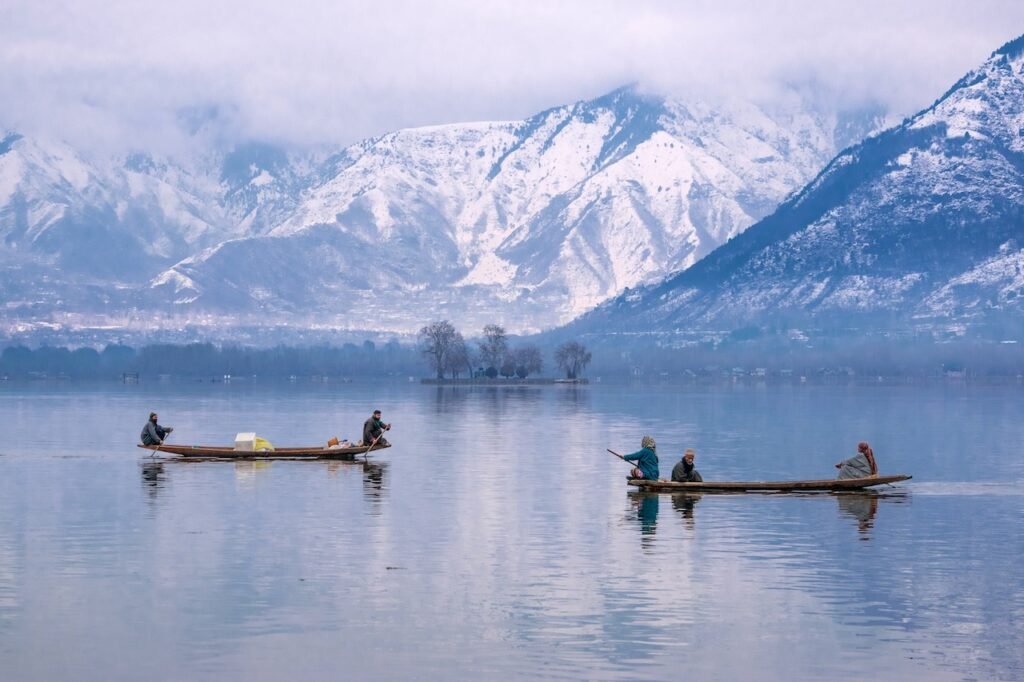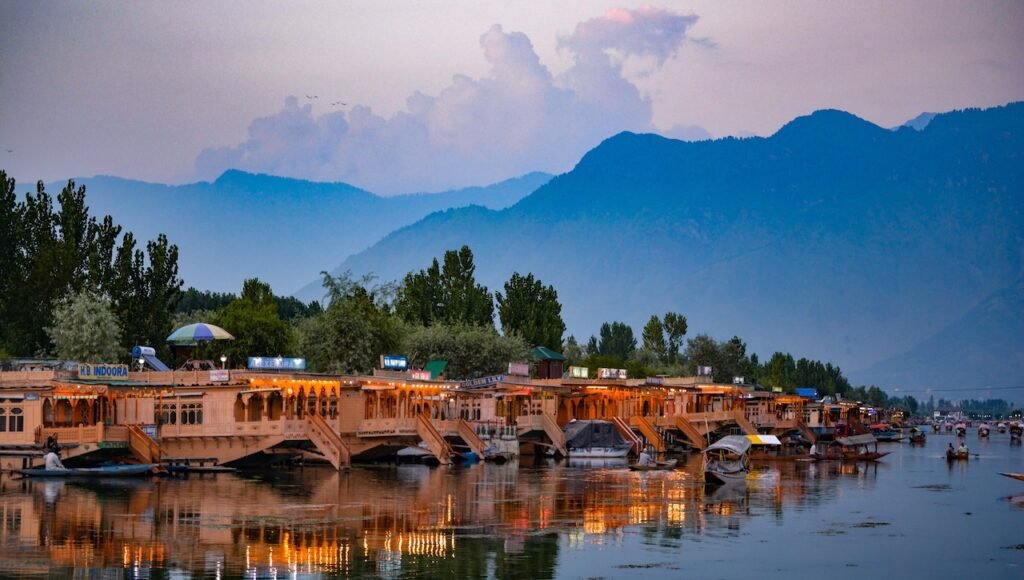In 2025, Srinagar witnessed a remarkable resurgence. Following recent periods of peace and the reopening of popular tourist destinations, the city has seen record highs in tourist arrivals and hotel bookings. Revamped infrastructure, better roads, upgraded public spaces, and enhanced law enforcement have propelled Srinagar into a new era of growth.
There’s an air of optimism in local markets, with artisans, guides, and small business owners reporting a revival unmatched in the last decade. The return of vibrant festivals, cultural performances, and bustling bazaars paints a vivid picture of a city reborn, ready to welcome the world and showcase its stunning lakes, gardens, artistry, and enduring spirit.
Srinagar in 2025 isn’t just a dream destination; it’s a living example of tradition, progress, and a commitment to peace, drawing visitors from every corner of the globe to experience the very soul of Kashmir.
Srinagar, the enchanting capital of Jammu and Kashmir, stands as a living testament to centuries of history, rich traditions, and dazzling natural beauty. Resting on the banks of the tranquil Jhelum River and surrounded by snow-capped mountains and lush valleys, Srinagar invites travellers to experience its stunning lakes, gardens, vibrant handicrafts, and a cultural vibrancy unmatched elsewhere in India.
Introduction to Srinagar
Srinagar, often hailed as the “Venice of the East,” is a city where timeless traditions meet breathtaking landscapes. With its scenic Dal and Nigeen Lakes, majestic Mughal gardens, and intricate houseboats, Srinagar offers a unique mix of history, art, gastronomy, and adventure to every traveller.
Historical Journey of Srinagar
Origins & Ancient Era
- The roots of Srinagar trace back nearly two millennia. Legend credits its founding to King Pravarasena II around 2000 years ago, while other traditions link the city’s establishment to the legendary Mauryan ruler, Ashoka, who furthered Buddhism in the valley.
- Its name is derived from ‘Sri’ (Lakshmi, the goddess of wealth) and ‘Nagar’ (city), reflecting both prosperity and spiritual significance.
- Historically, the city has witnessed rule by the Mauryas, Kushanas, Huns, and later, the Hindu kings until the 14th century, after which it experienced Islamic rule, Mughal grandeur, Durrani Afghans, Sikh dominion, and eventually, Dogra governance before joining India in 1947.
Medieval & Modern Periods
- The Mughals left an indelible imprint with their gardens, architecture, and promotion of arts.
- The British presence in the 19th century introduced unique colonial influences, and after independence, Srinagar became a centrepiece of political and cultural life in Kashmir.
Srinagar’s Vibrant Culture
Art, Craft, and Heritage
- Srinagar is famed for intricate handicrafts, a blend of Persian, Mughal, and local Kashmiri influences. Visitors can explore exquisite papier-mâché, wood carvings, carpets, and shawls that define Kashmiri artistry.
- The city’s architecture seamlessly blends Islamic, Buddhist, and Hindu elements, as evident in its sacred shrines, wooden bridges, and historic bazaars.
Performing Arts and Music
- Srinagar’s vibrant performing arts include the traditional ‘Bhand Pather’ folk theatre and Chakri music, as well as Sufiana melodies that infuse spiritual depth into the local culture.
- Local festivals celebrate both Islamic and Hindu traditions, offering a glimpse into Srinagar’s harmonious diversity.
Cuisine
- Kashmiri cuisine is celebrated throughout Srinagar, primarily rice-based and often complemented by lamb, vegetables, and signature Wazwan dishes. Aromatic teas, such as Kehwa and Noon Chai, as well as street delicacies, are popular among both residents and tourists.
Major Tourist Attractions in Srinagar
- Dal Lake: The picturesque heart of the city, famed for its iconic houseboats and Shikara rides, offers ever-changing vistas across seasons.
- Nigeen Lake: A serene alternative to Dal Lake, perfect for those seeking solitude amidst nature.
- Mughal Gardens: Nishat Bagh and Shalimar Bagh, masterpieces of Mughal landscaping, bloom spectacularly in spring and summer.
- Shankaracharya Temple: An ancient hilltop temple, offering panoramic views of Srinagar and its lakes.
- Hazratbal Shrine: Revered as a sacred site, it draws pilgrims from across the region and holds immense religious significance.
- Indira Gandhi Tulip Garden: Asia’s largest tulip garden, attracting thousands during its annual bloom in early spring.
- Dachigam National Park: Home to the Hangul deer and a diverse array of Himalayan wildlife, it is ideal for nature lovers and trekkers.
- Sri Pratap Singh Museum: Preserving centuries of Kashmir’s history and artistry within its walls.
- Old City (Downtown Srinagar): Explore narrow lanes, wooden houses, bustling markets, and the historic Jamia Masjid mosque.

Other Must-See Spots
- Nehru Botanical Gardens
- Hari Parbat Fort
- Chashme Shahi Garden
- Pari Mahal
Location and How to Reach Srinagar
Geographical Snapshot
- Srinagar lies centrally in the Kashmir Valley, flanked by the Himalayas and set beside the Jhelum River.
- It serves as the summer capital of Jammu and Kashmir, attracting visitors year-round with its temperate summer and spectacular snowy winters.
Travel Routes
- By Air: Sheikh ul-Alam International Airport directly connects Srinagar to major Indian cities, including Delhi, Mumbai, and Bengaluru.
- By Road: Well-connected via National Highway 44 through Jammu, the most frequented route for road-trippers and buses from northern India.
- By Train: The nearest major railway station is Jammu, with ongoing projects connecting the valley to India’s rail grid.
| Route | Mode | Approx. Time | Notes |
|---|---|---|---|
| Delhi–Srinagar | Direct flight/Bus | ~7 hours | Fastest & most convenient |
| Delhi–Jammu–Srinagar | Train/Bus | ~15 hours | Most affordable |
Srinagar’s Economy & Revenue
Srinagar, as the economic and administrative heart of Kashmir, drives the local economy predominantly through tourism, handicrafts, horticulture, and services.
- Tourism: The city generates substantial revenue through both domestic and international tourism, particularly during the summer and winter peak seasons.
- Handicrafts and Industries: World-class shawls, carpets, and papier-mâché goods are exported, fueling local enterprise.
- Agriculture & Horticulture: Primary livelihood in surrounding areas, producing apples, saffron, walnuts, and almonds.
- Tax Revenue: The monthly average tax revenue in Jammu and Kashmir, with Srinagar as the primary revenue engine, stood at approximately ₹1,180 crore in 2025, driven significantly by GST and sales tax. Non-tax revenue sources, including tourism and local businesses, contributed an additional ₹2,765 crore by August 2025.
Recent Developments and News in Srinagar
- In September 2025, Srinagar authorities reviewed major housing projects and infrastructure upgrades, focusing on growth and anti-terrorism efforts.
- Tourist destinations have recently reopened after the curfew, reaffirming Srinagar’s commitment to safety and hospitality for visitors.
- Authorities continue to bolster law and order and public amenities, enhancing Srinagar’s appeal as a global travel hotspot.
FAQs about Srinagar
What is the best time to visit Srinagar?
The city is beautiful year-round: spring (March–May) brings blooming gardens, summer (June–August) is ideal for boating and sightseeing, autumn (September–November) offers golden landscapes, and winter (December–February) attracts snow lovers.
How can travellers reach Srinagar?
Srinagar is connected via direct flights to major cities, regular trains (up to Jammu), and all-weather roads via Jammu. Flights are generally the fastest option from Delhi (about 7 hours, including transfer), while the road journey offers stunning mountain views.
Which are the must-visit attractions in Srinagar?
Dal Lake, Mughal Gardens, Shankaracharya Temple, Hazratbal Shrine, Dachigam National Park, and the vibrant Old City markets top the list.
What makes Srinagar’s culture unique?
It’s a confluence of Persian, Central Asian, and local traditions visible in its festivals, music, cuisine, art, and architecture, a microcosm of India’s diverse heritage.
Is Srinagar safe for tourists in 2025?
Recent reviews by city officials and increased security measures have made Srinagar increasingly safe, with most major tourist areas open and bustling.
What are Srinagar’s top travel souvenirs?
Handwoven Pashmina shawls, silk carpets, papier-mâché crafts, walnut wood artifacts, dried fruits, and saffron top travelers’ souvenir lists.
How does Srinagar contribute to Jammu and Kashmir’s economy?
Through robust tourism, world-renowned handicrafts exports, and agriculture, alongside substantial tax and non-tax revenue, it is the economic heartbeat of the region.
Are there any recent developments or news in Srinagar?
Yes, authorities are boosting infrastructure, improving law and order, and reopening popular destinations after periodic restrictions, supporting Srinagar’s reputation as a safe tourist hub in 2025.
